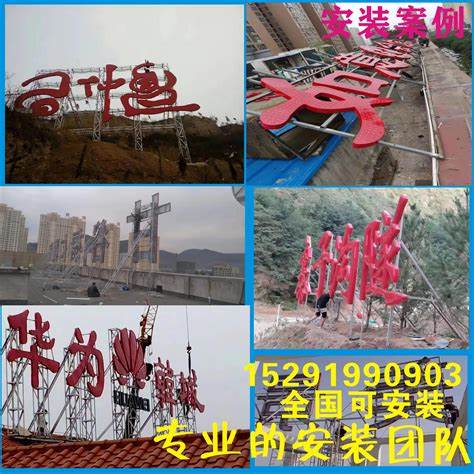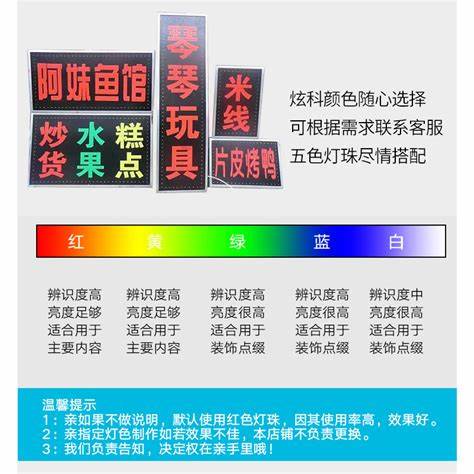Acrylic PVC billboard
- 广告牌
- 2024-09-21 20:58:07
- 3831
- I、What are the differences between acrylic and PVC? Which material is better, acrylic or PVC?
- II、What kinds of billboards with luminous characters are there?
- III、Billboard materials
- IV、What are the materials of billboards?
The difference between acrylic and PVC: different uses, different characteristics, and different disadvantages.
1. Different uses
Acrylic products include acrylic plates, acrylic plastic pellets, acrylic light boxes, signs, acrylic bathtubs, acrylic artificial marble, acrylic resin, acrylic (latex) paint, acrylic There are many types of adhesives and other products.
Acrylic:
PVC:
PVC: wire sheath, optical fiber sheath, shoes, handbags , bags, accessories, signs and billboards, construction and decoration supplies, furniture, hangings, rollers, pipes, toys, curtains, rolling doors, auxiliary medical supplies, gloves.
2. Different characteristics
Acrylic: It has crystal-like transparency, a light transmittance of more than 92%, soft light, clear vision, and acrylic colored with dyes has good Color development effect. Acrylic panels have excellent weather resistance, high surface hardness and surface gloss, and good high-temperature performance.
The softening point of polyvinyl chloride resin is low, 75~80℃, and the embrittlement temperature is lower than -50~-60℃. The long-term use temperature of most products should not exceed 55℃, and special formulas can reach 90 ℃. The polar groups of polyvinyl chloride are directly attached to the main chain. Below the glass transition temperature, the dipole segment is restricted by the main chain atoms of the frozen structure and cannot move. Therefore, dipolarization does not occur and it can be used at room temperature. high frequency insulating materials.
3. Different disadvantages
Acrylic: Due to the difficulty and high cost of acrylic production, there are many low-quality and low-cost substitutes on the market. These substitutes are also called "acrylic", but they are actually ordinary organic boards or composite boards (also known as sandwich boards). Ordinary organic boards are cast with ordinary organic glass cracking materials and pigments. The surface hardness is low, easy to fade, and the polishing effect is poor after grinding with fine sand.
The composite board only has a thin layer of acrylic on the surface and ABS plastic in the middle. It is prone to delamination due to thermal expansion and contraction during use. True and false acrylic can be identified from the subtle color difference and polishing effect of the plate cross section.
Polyvinyl chloride is also a commonly used plastic. It is a resin composed of polyvinyl chloride resin, plasticizer and antioxidant. It is not toxic in itself. However, the main auxiliary materials such as plasticizers and antioxidants added are toxic. The plasticizers in daily-use PVC plastics mainly use dibutyl terephthalate, dioctyl phthalate, etc. These chemicals All are toxic, and the anti-aging agent lead stearate of PVC is also toxic.
Reference source: Baidu Encyclopedia-Acrylic
Reference source: Baidu Encyclopedia-Polyvinyl chloride
Currently, LED billboards with luminous characters are relatively popular. Here are some common luminous characters.
1. Acrylic luminous characters
Three-sided acrylic luminous characters, the front and sides are acrylic, the bottom plate is PVC surrounding the characters: the material is acrylic (imported board and domestic board) panel , thick PVC material surrounds, and the inner core of the characters is covered with LED light source. The advantages are that it lights up at night, the surface is glossy, the color is bright, waterproof, and the most important thing is energy saving. The disadvantage is that the characters cannot be made too small. It is suitable for indoor and outdoor, store signboards, Large corporate promotional building word logo.
2. Blister luminous characters
The material function of blister luminous characters is similar to that of flat luminous characters, except that the strokes of the characters are raised tangible surfaces. The advantages are more classy, strong, wear-resistant and waterproof. , energy saving. It is suitable for all kinds of outdoor advertising characters, and the whole blister panel is more suitable for store signboards and image walls.
3. Light box characters
It combines the craftsmanship of stainless steel and aluminum characters. The biggest breakthrough is that the characters emit light by themselves, eliminating the need for external lighting at night. , the specific method is to hollow out the text strokes, replace them with light-transmitting acrylic sheets, and install cold light source 3.3 (daylight tube) or neon lights in the inner cavity of the text, so that it can take advantage of the natural contrast effect of colors during the day, and at night For example, it emits light by itself, and there are no spots caused by external lighting on the surrounding walls. The text effect is quite obvious, but the disadvantage is that the cost is higher and the maintenance is slightly complicated. You need to use tools such as a gondola to remove the outer panel to replace the light source.
4. LED luminous characters
LED is a sign material category that has just developed rapidly in recent years. It can replace neon lights and can be used in restaurants, shopping malls, convenience stores, open-air squares and buildings. Light box signs and luminous characters. It has the advantages of high brightness, long life (up to 150,000 maintenance-free hours), high efficiency, easy installation, reliable performance, and high cost performance, making it widely used.
5. Exposed luminous characters
The plane and surrounding edges are the same as those of ordinary luminous characters. The only difference is the light source, which is composed of small dot LED lamp beads and covers the panel with characters. The advantage is that it can emit a strong light source no matter day or night, and it is energy-saving. Other features are the same as the Yak edge luminous characters, and it is suitable for use in store signs, KTV, nightclubs, hotels, guesthouses and other entertainment venue signs.
Common materials for billboard production include:
PC board: polycarbonate, endurance board, sunlight board, suitable for various indoor, For outdoor use, it has the characteristics of high transparency, light weight, impact resistance, sound insulation, heat insulation, flame retardant, and anti-aging.
PVC board: used in the manufacturing and processing of construction supplies, home appliances, various plastic sheets, and engineering plastics.
Acrylic board: Acrylic board has excellent weather resistance, high surface hardness and surface gloss, and good high-temperature performance.
Composite boards: boards made of different materials. Composite boards are often used to make signs in the production of billboards.
Aluminum profile: a metal structural material with beautiful appearance, strong usability, good protection and good decoration.
Acrylic characters: cut out of acrylic sheets.
Stainless steel characters: Will not rust, have high safety, and have a strong three-dimensional effect.
Iron characters: Made of ordinary iron plate materials.
Copper characters: Made of brass plate material.
Titanium characters: high-end characters, made of titanium plate material.
PVC characters: processed from PVC sheets.
Light-emitting characters: LED luminous characters are currently commonly used luminous fonts in the advertising sign production industry.
LED module: LED module is a product composed of light-emitting diodes arranged together according to certain rules and then packaged, plus some waterproofing treatments.
Border strip: used to make the frame of the sign.
Aluminum profile frame strips: generally used for frame production of signboards.
Acrylic border strip: used for frame production of signboards.
Stainless steel frame strip: used for frame production of signboards.
Iron frame strip: processed from ordinary iron plate materials, used for the frame production of signboards.
Shading paper: used for shading processing in photo printing, which can give the picture a texture effect.
Varnish: Used to protect the picture and make it waterproof and sun-proof.
There are many materials for billboards, the common ones include:
1. Aluminum alloy plate
As a billboard material, aluminum alloy plates are popular because of their light weight, rich colors and strong corrosion resistance. This material is suitable for outdoor use and will not rust or corrode under the influence of the natural environment for a long time. In addition, aluminum alloy plate billboards are easy to produce and have a beautiful appearance.
2. Acrylic board
Acrylic board has the characteristics of good light transmittance and various colors, and is often used to make billboards with lights. . A variety of patterns and text can be printed on its surface, and the display effect is good. In addition, the acrylic board material has strong impact strength, ensuring the stability and safety of the billboard.
3.PVC board
PVC board is also a common billboard material. It has excellent chemical stability, corrosion resistance and high hardness. PVC boards are easy to process and produce, and the cost is relatively low, so they are widely used in the manufacture of various outdoor and indoor billboards.
4. Wooden materials
Wooden billboards are mainly made of natural wood or artificial boards, giving people a natural and environmentally friendly feeling. Wooden billboards are suitable for use in landscape environments or some retro-style places. However, wooden materials are susceptible to weather and environmental influences and require regular maintenance and upkeep.
5. Steel material
Steel, as the material of billboards, is known for its strong and durable characteristics. Steel billboards are not easily damaged after long-term outdoor use and can carry a large weight. However, it is heavy, relatively difficult to move and install, and requires regular anti-rust treatment.
The above are some common materials for billboards. Each material has its own unique advantages and scope of application. According to specific needs and budget, you can choose the appropriate billboard material.

上一篇:亚克力广告牌凸显内容
下一篇:亚克力红底白字广告牌





















